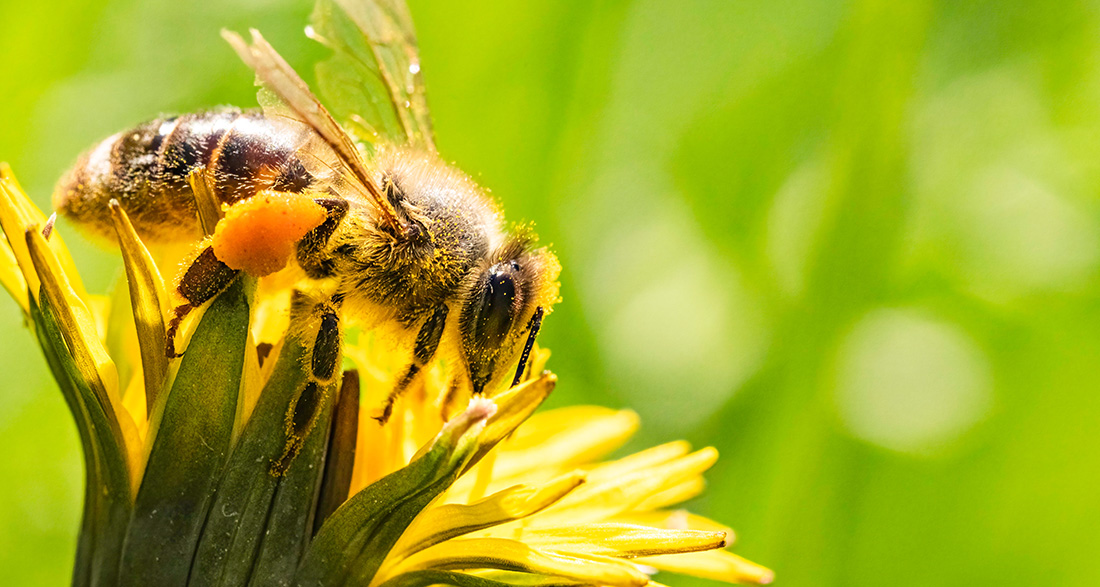When a dog gets stung by a bee, it’s crucial to administer first aid, as insect stings can not only be painful but also potentially dangerous. We’ll explain what to do in such situations.
First Aid Measures for a Bee Sting
Insects are abundant during the summer, causing annoyance not only to us humans but also exposing our four-legged friends to stinging insects. A bee sting in a dog can be unpleasant and painful, potentially leading to inflammation at the sting site. In severe cases, a dog might be at risk of a life-threatening situation, especially if it reacts allergically. To prevent this, it’s essential to act promptly and appropriately.
My dog got stung by a bee – What should I do?
The severity of a bee sting for a dog depends on the affected body part. A sting in the throat area, for example, can be more threatening than on a paw. Typically, most bee stings in dogs are mild. However, it’s crucial to be familiar with first aid measures to respond correctly in case of an emergency. First and foremost, try to calm your dog down. Offering reassuring words and gentle petting can help your dog process the initial shock.
Sting on body parts like the paw or abdomen – Remove the stinger and apply cold compress
- Unlike wasps, bees leave a stinger behind after a sting. You should promptly remove it with tweezers. Be cautious, as the stinger’s tip contains a venom sac that may release venom with excessive pressure.
- Afterward, cool the affected area using an ice pack or a damp cloth. This applies even if no stinger is present. Swelling usually reduces over time.
Actions for a sting in the snout or throat
If the bee stung the dog’s snout or throat, immediate action is crucial. Cooling from the outside is particularly important in the case of a throat sting – preferably at the level of the larynx. Suitable options include ice packs, cooling pads, or damp cloths. The goal is to prevent swelling in the throat.
If you observe that your dog’s mucous membranes or tongue are swelling, and your dog is experiencing difficulty breathing, immediate first aid in the form of mouth-to-nose resuscitation is necessary to prevent suffocation.
For mouth-to-nose resuscitation, follow these steps:
- Pull the dog’s tongue out of its mouth and slightly extend the head.
- Close the mouth and keep it shut.
- Begin artificial respiration through both nostrils.
- Observe the movement of the chest during artificial respiration.
- Be cautious not to breathe too much air into the dog. Stop resuscitation once the dog’s chest rises.
- Repeat artificial respiration until your dog breathes independently, and its pulse is noticeably palpable.
- Continue resuscitation during transport to the veterinarian.
Allergic shock from a bee sting – What to do?
An allergic shock in a dog is a life-threatening condition, requiring swift action. Vital organs may not receive sufficient blood supply, leading to potential permanent damage.
Possible signs of shock:
- The dog appears absent and weakened.
- Trembling
- Shallow breathing
- Accelerated heartbeat
- Loss of consciousness
Actions for a dog in a state of shock:
- Place your dog in the stable side position.
- Straighten the head and ensure the dog gets air. Open the mouth and pull out the tongue if necessary.
- Elevate the hindquarters using a pillow, blanket, or jacket.
- Protect your dog from cooling down – a thermal blanket reliably keeps them warm.
- If your dog is conscious, offer water.
- Seek immediate veterinary attention.
With the mentioned first aid measures after a bee sting in a dog, you are well-prepared for emergencies.


